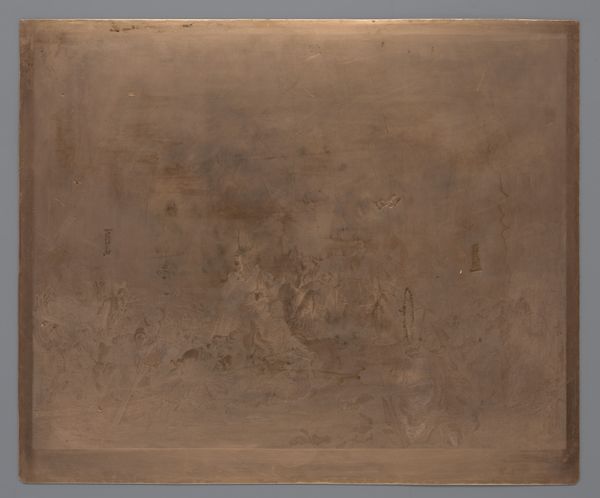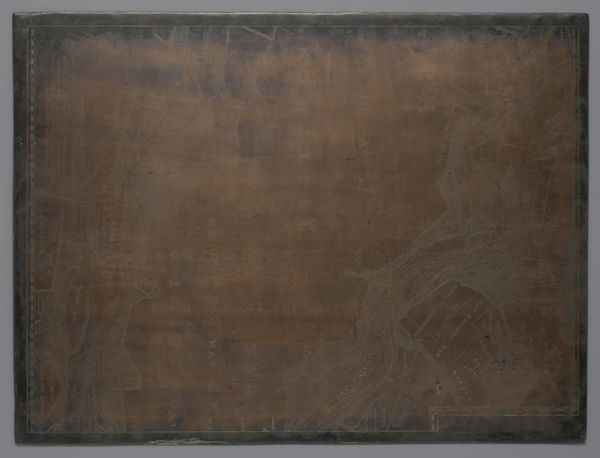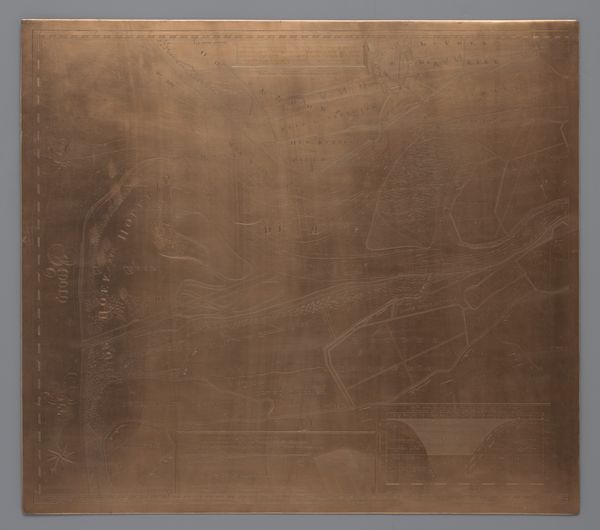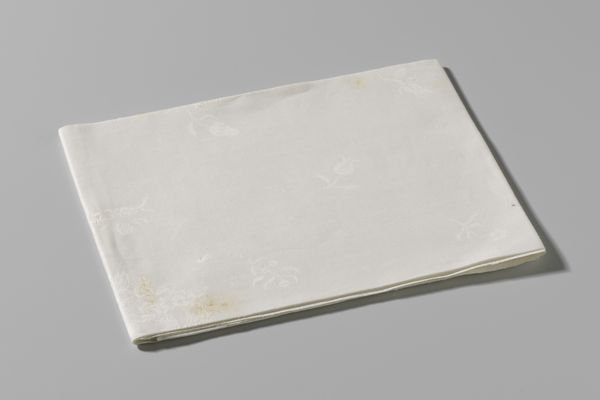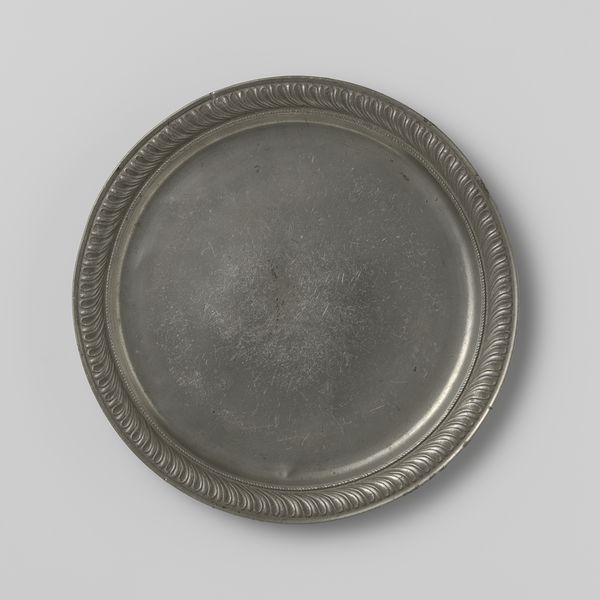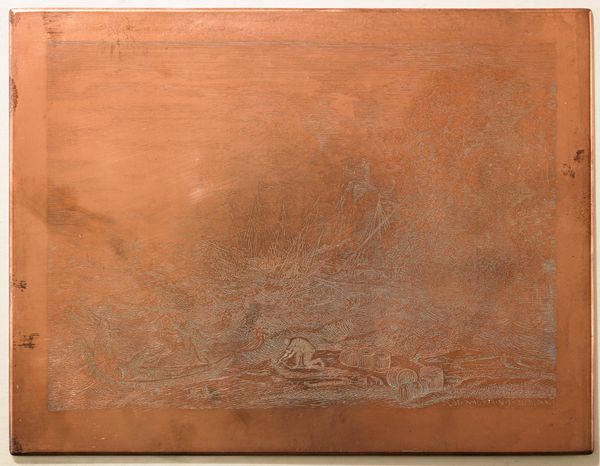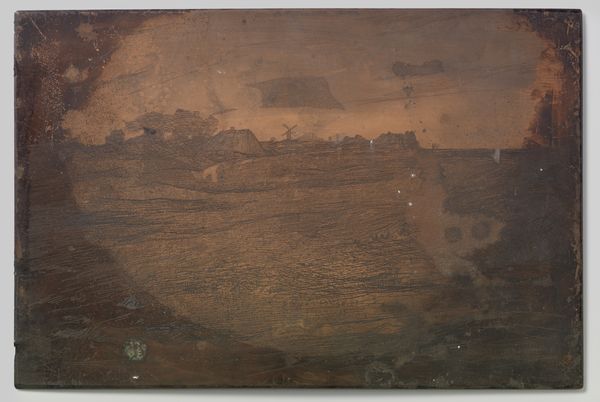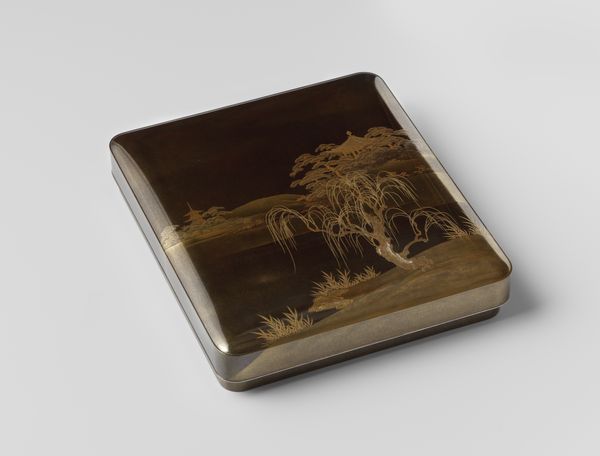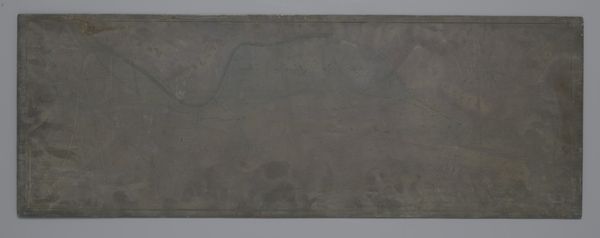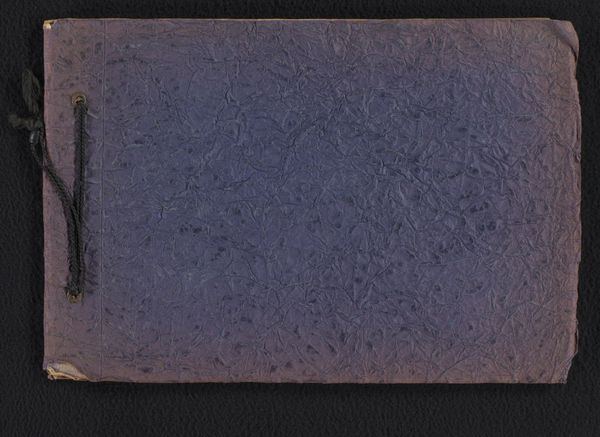
mixed-media, metal
#
mixed-media
#
water colours
#
metal
#
landscape
#
ceramic
Dimensions: height 139 mm, width 180 mm
Copyright: Rijks Museum: Open Domain
Curator: Welcome. We're standing before what the Rijksmuseum identifies as a "Pastorale scène" crafted sometime between 1826 and 1886 by Dirk Jurriaan Sluyter. It’s mixed media, with the subtle application of watercolours. What are your first impressions? Editor: A profound sense of antiquity and muted beauty. The colour palette evokes aged photographs, where memory and reality seem to coalesce. It reminds me of objects unearthed from centuries past. Is it on metal? Curator: Yes, I understand your reading. The support is metal, yes. The work strikes me as a melancholic reflection on idealized rural life, seen through a lens that perhaps omits the more arduous aspects of the era. The fact that it is framed so prominently on a rectangular object immediately forces a kind of mediation. It acknowledges artifice, to some extent. Editor: The landscape feels like a visual echo. Note how it appears contained within a tarnished frame—suggesting something held in place or perhaps, suppressed. It triggers memories of childhood scenes depicted on old trays, imbuing domestic objects with bucolic beauty. Curator: Interesting. Perhaps that domestic quality touches upon anxieties around women’s labour. Are we seeing a pastoral scene that obscures gendered realities? It prompts me to consider the class dynamics and power structures inherent in the romanticization of rural life. Editor: The texture seems almost corroded, suggestive of decay. A lost Eden? It reflects on time's relentless march, how even idealized versions are doomed to tarnish. It reminds us that all utopias hold the seeds of their own dissolution. Curator: So, it is the image of a world under pressure... We’re prompted, maybe, to consider the long durée—to recognize how history imprints itself materially upon even seemingly placid landscapes. Thanks for joining me in the gallery today. Editor: Thank you, indeed. I'm leaving here thinking more deeply about cultural memory and the enduring power of objects to speak to both history and myth.
Comments
No comments
Be the first to comment and join the conversation on the ultimate creative platform.
